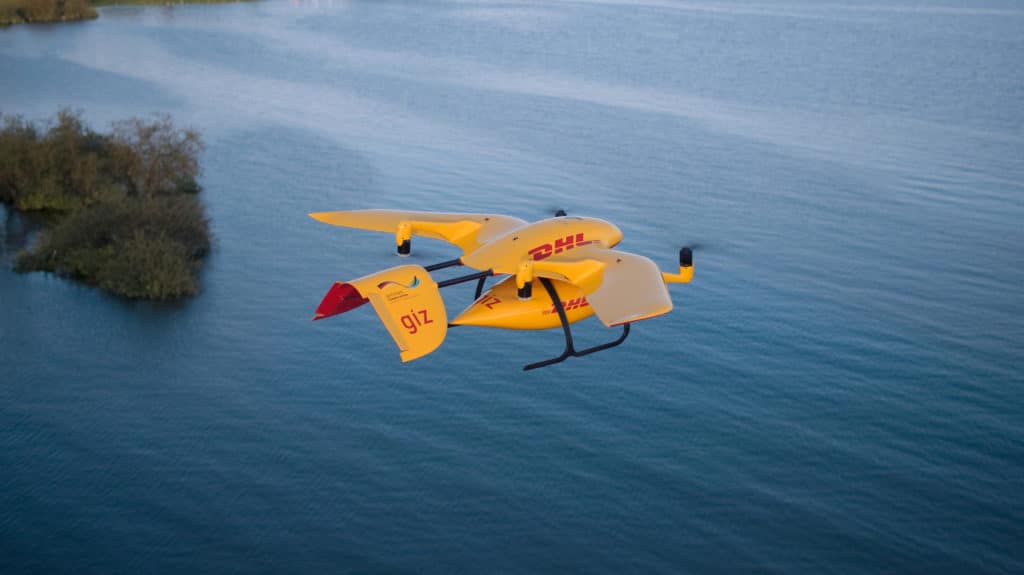Although the introduction of Unmanned Aircraft Systems (UAS) has ushered in a new era in aviation and the transportation of goods, it also brought certain risks and inconveniences with it.
As these unmanned aircraft become increasingly prevalent, gaining popularity and rising in usage as the days go by, the need for effective management of traffic in the airspace has become essential. Hence, the introduction concept of UAS Traffic Management (UTM).
Understanding UAS Traffic Management (UTM)
UTM is a system that functions like Air Traffic Management (ATM), but it is meant for low-level airspace where drones operate and is largely automated.
According to the FAA, it is “a ‘traffic management’ ecosystem for uncontrolled operations that is separate from, but complementary to, the FAA’s Air Traffic Management (ATM) system.”
It aims to address challenges such as collision avoidance, airspace congestion, and compliance with regulations in unmanned aircraft.
UTM systems handle processes such as airspace monitoring, flight planning, tracking, and coordination of drone operations, relying on a combination of technologies, including communication networks, surveillance systems, and data processing algorithms.
They also enable real-time information exchange between drone operators, regulatory authorities, and other stakeholders to ensure a safe and reliable operation of drones.
Functions and Importance of UTM.
UAS Traffic Management (UTM) is a system that manages the safe and efficient operation of UAS. It does this by performing numerous functions, including:
- Detecting and tracking UASs: UTM systems use a variety of sensors, such as radar, to detect and track UASs in real-time. This information can be used to ensure that UASs are not flying in restricted airspace or in close proximity to other aircraft.
- Collision avoidance: UTM systems can also provide collision avoidance services to UASs. This can be done by sharing information about the location of other UASs with each UAS, or by providing real-time alerts to UAS operators if they are at risk of colliding with another aircraft.
- Separation assurance: UTM systems can also help to ensure that UASs are safely separated from other aircraft. This can be done by providing information about the airspace that is available for UAS operations, or by providing real-time alerts to UAS operators if they are entering airspace that is not safe for UAS operations.
- Airspace management: UTM can help to ensure that UASs operate safely in the airspace by providing real-time information about airspace constraints and flight intents. This information will then be used to create and enforce rules for UAS operations, such as altitude restrictions and separation distances.
- Emergency response: UTM systems can also be used to coordinate emergency response in the event of a UAS incident. This can be done by providing information about the location of the UAS, or by coordinating the response of emergency services.
The Rise and Growth of UTM
The rise and growth of UTM (Unmanned Traffic Management) can be attributed to a number of factors, including:
- The increasing popularity of drones: Drones are becoming more and more popular for a variety of applications, such as delivery, inspection, and surveillance. This has led to an increase in the number of drones in the airspace, which has created a need for UTM systems to manage these operations safely and efficiently.
- The development of new technologies: The development of new technologies, such as sense and avoid systems, has made it possible to develop more sophisticated UTM systems. These systems can track the location of drones in real-time and provide information about potential collisions.
- The emergence of regulations: As the use of drones has grown, so too have the regulations governing their operation. These regulations have created a need for UTM systems to help ensure that drones are operated in a safe and compliant manner.
- The need to improve safety: The increasing number of drones in the airspace is raising safety concerns. UTM systems can help to improve safety by providing real-time information about drone operations and by preventing collisions.
Components of UAS Traffic Management
UAS Traffic Management comprises various components that work together to facilitate the safe and efficient operation of drones:
- Unmanned Aircraft Systems (UAS): These are the drones themselves, equipped with sensors and communication capabilities to interact with UTM systems.
- Communication Infrastructure: UTM relies on robust communication networks to facilitate real-time data exchange between drones, ground stations, and other stakeholders.
- Surveillance and Detection Systems: These utilize radar, cameras, and other technologies to monitor and detect the presence of manned and unmanned aircraft, contributing to situational awareness and collision avoidance.
- Automated Air Traffic Management Systems: These systems process UAS flight plans, monitor airspace, and provide real-time information to UAS operators and other stakeholders. They help manage and coordinate UAS operations, ensuring safe and efficient integration into the existing aviation ecosystem.
Regulations and Guidelines in UAS Traffic Management
There are a number of different regulatory bodies that govern the use of UAS around the world.
These bodies have all developed regulations that govern the operation of UAS in their respective airspaces. The regulations vary from country to country, but they generally cover:
- Registration and licensing of UAS operators
- Operating limitations
- Safety requirements
- Security requirements
Key regulating bodies
There are several key regulating bodies and organizations involved in the development and regulation of UAS Traffic Management (UTM) systems. Here are a few notable ones:
- Federal Aviation Administration (FAA): In the United States, the FAA is the primary regulatory body responsible for the integration of UAS into the national airspace. The FAA has been actively involved in UTM research and development and has initiated various programs and initiatives to advance UTM, including the UAS Integration Pilot Program and the UTM Pilot Program.
- European Union Aviation Safety Agency (EASA): EASA is the regulatory agency responsible for aviation safety in Europe. It has been actively involved in the development of UTM regulations and standards through its U-Space initiative. U-Space is an ecosystem of services, procedures, and regulations that aims to enable safe and efficient UAS operations in Europe.
- International Civil Aviation Organization (ICAO): The ICAO is a specialized agency of the United Nations that sets international standards and regulations for civil aviation. It has been working on the development of standards and guidance related to UTM through its UAS Advisory Group (UAS-AG) and has published documents such as Circular 328, which provides guidance on UTM concepts.
Importance of regulation in maintaining safety and security
Regulation is important in maintaining safety and security in UTM. They help to ensure that UAS are operated in a safe and responsible manner, and they also help to protect people and properties from harm.
Some of the benefits of regulation in UTM include:
- Improved safety: Regulations help to improve safety by setting clear rules and procedures for UAS operators to follow. This helps to reduce the risk of accidents and incidents.
- Increased security: Regulations help to increase security by requiring UAS operators to take steps to protect their drones from being used for malicious purposes. This helps to protect people and property from harm.
- Enhanced efficiency: Regulations can help to enhance efficiency by ensuring that UAS operations are conducted in a coordinated and orderly manner. This can help to reduce congestion in the airspace and improve the overall efficiency of UAS operations.
Current Challenges in UAS Traffic Management
Despite significant advancements in UTM technology, several challenges remain:
- Integration with Manned Aircraft Traffic Systems: Ensuring seamless integration of UAS into existing manned aircraft traffic management systems is a complex task. Coordinating the flight paths and ensuring collision avoidance between manned and unmanned aircraft is a critical challenge.
- Technological Challenges and Advancements Needed: UTM systems require continuous technological advancements to handle the increasing number of drones, enable reliable communication, and improve automation capabilities for efficient airspace management.
- Privacy and Security Concerns: The proliferation of drones raises concerns regarding privacy invasion and potential security threats. UTM systems need to address these concerns through strict data protection measures and secure communication protocols.
- Remote ID Controversies in the US: The implementation of Remote Identification (Remote ID) regulations in the United States has sparked debates and controversies. Remote ID aims to provide identification and tracking information for drones, but concerns have been raised about privacy and the burden on drone operators.
Key Players in the UAS Traffic Management Sector
1. Frequentis
Frequentis is a leading provider of mission-critical communication and information systems. The company’s products and solutions are used to manage critical infrastructure, provide communication and information services to first responders, and improve the safety and efficiency of transportation.
2. Astra UTM
Astra UTM is an advanced Unmanned Traffic Management (UTM) system that caters to Authorities, ANSPs, Solution Developers and Drone operators, with tools and applications encompassing diverse UTM workflows.
They are a leading provider of UTM solutions and is used by a variety of organizations, including:
- Government agencies: AstraUTM is used by government agencies in the United States, the United Kingdom, and Australia to manage drone traffic in their airspace.
- Drone operators: AstraUTM is used by drone operators to plan and execute safe and compliant drone flights.
- Solution developers: AstraUTM is used by solution developers to create applications and services for the drone industry.
3. Unifly
Unifly is a European software company that provides a platform for drone telematics services for unmanned traffic management. The company provides mapping and location data to connect authorities with pilots for the safe integration of drones into airspace and unmanned aviation.
4. AirMap
AirMap is a company that provides airspace management solutions for unmanned aircraft systems (UAS) or drones. The AirMap platform provides features such as flight planning tools, airspace authorization capabilities, real-time traffic alerts, and situational awareness for drone operators.
5. ANRA Technologies
ANRA Technologies is a leading provider of unmanned traffic management (UTM) solutions. The company’s software platform helps to manage drone traffic in low-altitude airspace, providing authorities with tools to deconflict drone traffic and prevent collisions. It also offers a variety of solutions for drone operators, including flight planning, flight approvals, and real-time flight monitoring.
6. PrecisionHawk
PrecisionHawk is an American company that specializes in providing advanced drone and data analytics solutions for industries such as agriculture, energy, and infrastructure. They provide drone hardware, software, and data analytics tools to enable industries to gather valuable insights and make informed decisions.
Experts Who Talk About UTM
- Todd Donovan
Todd Donovan is currently the VP of Airspace Mobility Solutions for the Americas at Thales. He is a passionate advocate for leveraging technology to improve aviation, and he talks about UAS, UTM, drones, aviation, and air traffic management.
- David Walters
David Walters is an enthusiast and thought leader in the aviation space. He currently works as the Head Of Futures & Innovation for the National Police Air Service and regularly tweets about drones in general. - Drone Analyst
Drone Analyst is a drone blog that is run by David Benowitz. It is now mainly active on Twitter, posting drone news and updates.
Although more active on YouTube, The Drone Geek brings drone updates and news on a regular basis to its followers, including leaks and reviews.
- Philip Butterworth-Hayes
Philip Butterworth-Hayes is the former Managing Editor of Jane’s World Airlines and Jane’s Aircraft Component Manufacturers. Currently, he published and manages Unmanned Airspace, a UAS-dedicated blog.
Conclusion
UAS Traffic Management (UTM) plays a critical role in facilitating the safe and efficient integration of unmanned aircraft systems into the airspace.
With the rise of drone usage across industries, UTM systems are becoming increasingly important. However, challenges such as integration with manned aircraft traffic systems, technological advancements, privacy, and security concerns need to be addressed to unlock the full potential of UAS operations.
As key players continue to innovate and regulations evolve, the future of UTM holds promise for a harmonious coexistence between manned and unmanned aviation, opening up exciting possibilities for various applications and industries.




